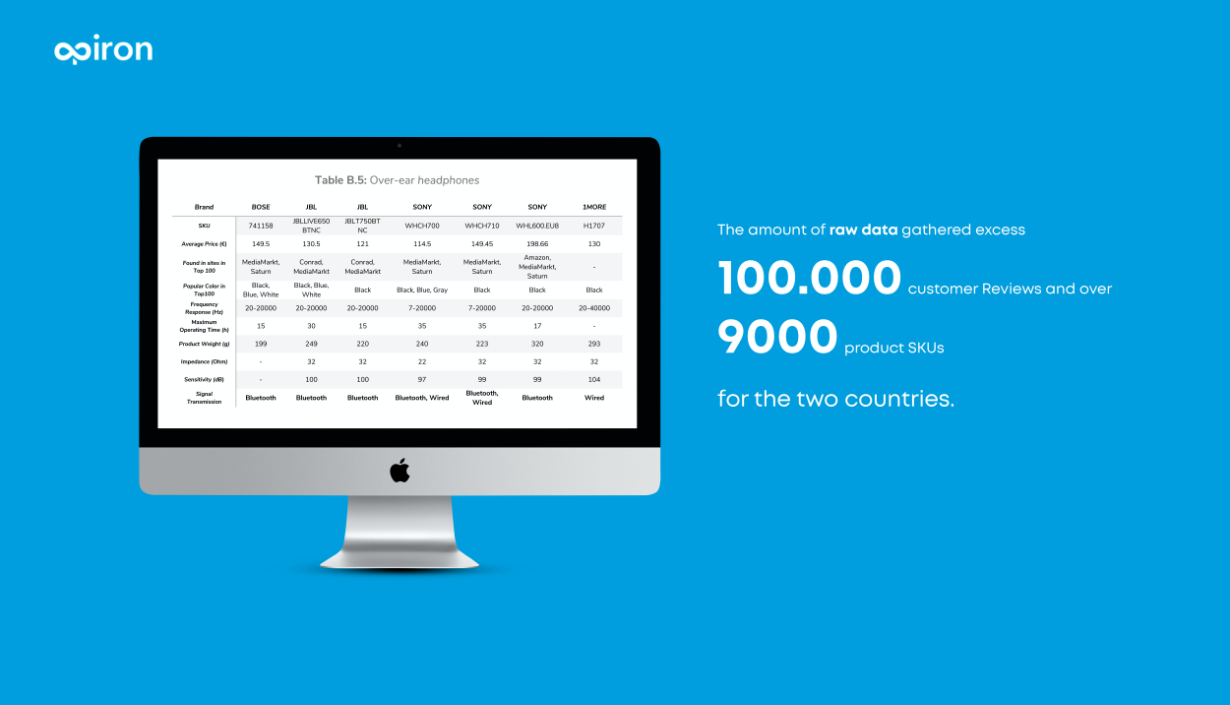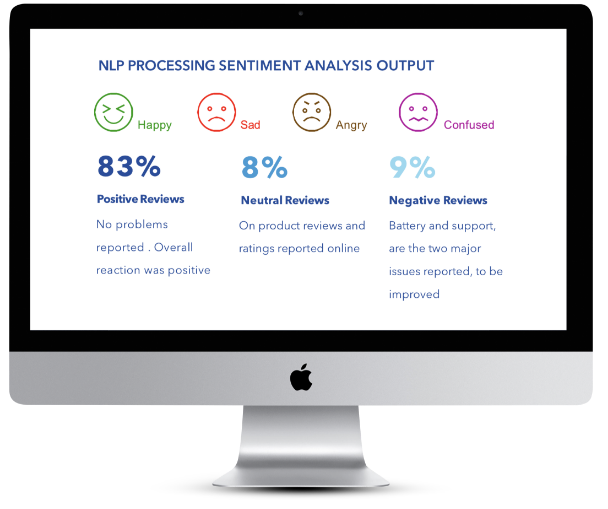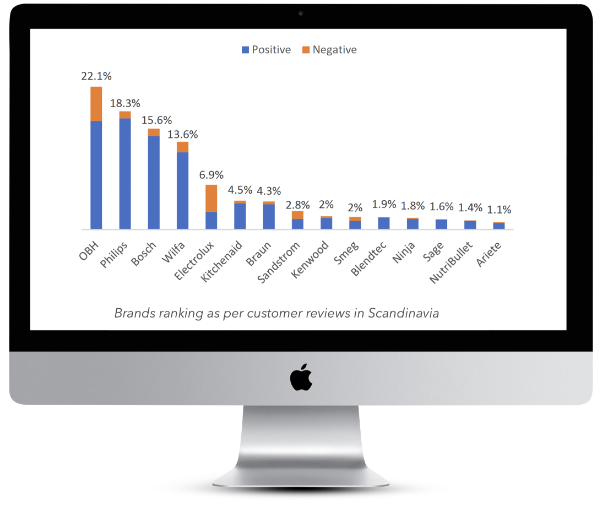Our in-house developed tools identified previously undetected shortcomings
Our client’s company specializes in acoustic design and development to bring premium audio products at a reasonable price to customers worldwide. In our case our experts were requested to perform a marketing analysis to investigate why the client’s brand performance was lower in German and Danish markets than in other countries.
Our methodology approach included data crawling, natural language processing (NLP), data analysis and finally reporting of the results. Although the crawled reviews are not written in English but in Danish, Finnish, Norwegian, Swedish, and Italian, all the information has been translated using Apiron Technologies’ in-house tools.











